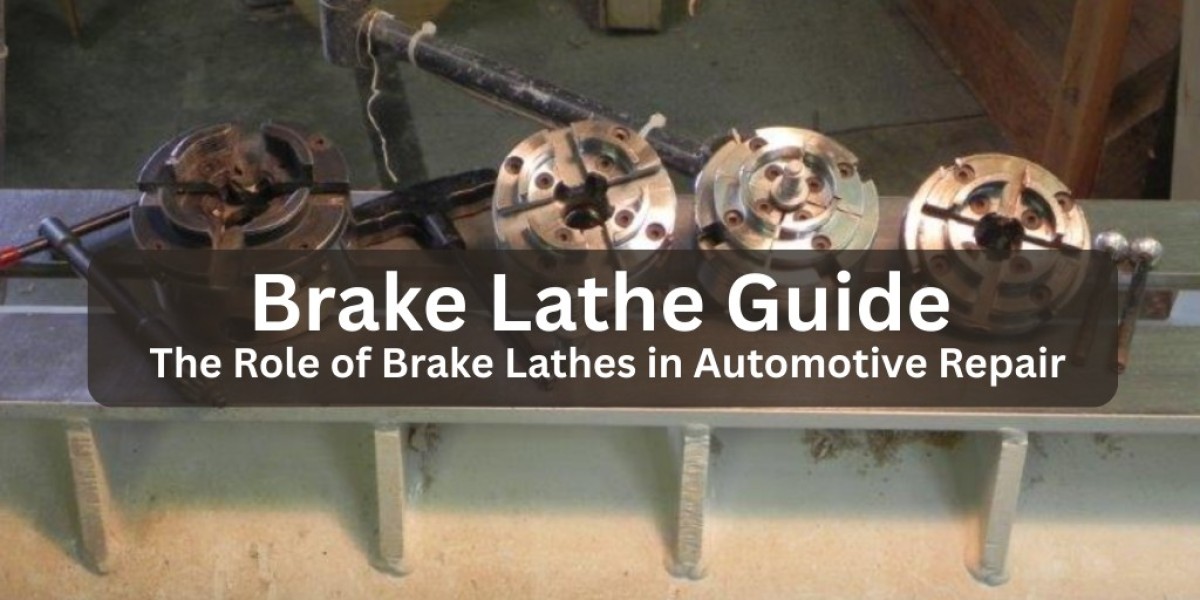Brakes are a critical safety feature in every vehicle, designed to protect both the driver and passengers. When functioning properly, they allow for controlled stops, smooth driving, and confidence on the road. However, brake rotors and drums gradually wear down with use, creating uneven surfaces that cause vibration, squealing, and reduced braking power. This is where a brake lathe becomes an invaluable tool for both mechanics and vehicle owners.
A brake lathe is a specialized piece of equipment that restores the smoothness of rotors and drums by removing a thin layer of metal. Instead of spending hundreds of dollars on replacements, this process extends the lifespan of braking components, saving time, money, and resources. In this guide, we will cover everything you need to know about brake lathes including their purpose, types, benefits, disadvantages, maintenance, and even future trends.
What Is a Brake Lathe?
A brake lathe is a precision machine used to resurface brake rotors or drums. By carefully shaving off damaged material, it creates an even contact surface for brake pads. This process eliminates brake pedal pulsation, noisy braking, and inconsistent stopping power.
These machines are a staple in professional auto repair shops, and they are considered an investment because they help mechanics provide affordable, high-quality service. Instead of discarding a rotor with plenty of usable thickness, the brake lathe restores it to like-new condition.
Interestingly, this concept of resurfacing components instead of replacing them can also be found in machining industries. For example, Hardinge lathes are known for precision metal cutting, showing how lathes of different types play crucial roles in both automotive and industrial applications.
Key Functions of a Brake Lathe
A brake lathe is not just about resurfacing. It performs several critical tasks:
Restores smooth surfaces on rotors and drums
Removes grooves, heat spots, and warping
Improves braking efficiency and performance
Extends the lifespan of brake pads and rotors
Reduces vibrations and squealing noises
Each of these functions contributes to safer driving and reduced repair costs, making brake lathes an essential tool in the automotive repair industry.
The Purpose of a Brake Lathe
The main purpose of a brake lathe is to ensure braking systems remain reliable and effective. During everyday driving, brakes are exposed to friction, high temperatures, and repeated pressure. These stresses cause uneven wear that leads to noticeable symptoms such as:
Vibrations felt in the steering wheel
Pulsating brake pedals
Grinding or squealing noises
Longer stopping distances
A brake lathe eliminates these problems by machining the brake component to a perfectly flat finish. This ensures proper pad-to-rotor contact, which improves safety and comfort while driving.
Benefits of Brake Lathes
Brake lathes provide significant benefits for drivers and auto repair shops alike:
Enhanced Safety with smoother stops
Cost Savings compared to rotor replacement
Extended Component Life through prevention of pad wear
Noise Reduction by removing imperfections
Environmental Sustainability by reducing waste
In addition, the versatility of brake lathes makes them adaptable to many vehicle types, from passenger cars to commercial vehicles.
Just as precision tools are essential in woodworking, the wooden lathe guide shows how specialized machines help shape durable, quality products. Similarly, brake lathes deliver precision shaping in automotive repair, ensuring smooth and reliable results.
Types of Brake Lathes
Brake lathes come in several forms, each suited for different needs. Understanding their differences helps mechanics and shop owners choose the right tool.
On-Car Brake Lathes
These machines attach directly to the vehicle hub, machining the rotor without removal. Since they cut while the rotor remains in its natural position, accuracy is exceptional.
Advantages:
Faster service without rotor removal
Accounts for hub and bearing alignment
Portable and convenient for busy shops
Off-Car Brake Lathes
These require the rotor or drum to be removed before machining. The part is mounted securely, allowing precision cutting.
Advantages:
Extremely accurate resurfacing
Best for heavily worn or damaged rotors
Handles large components with ease
Combination Brake Lathes
These versatile machines handle both rotors and drums. Instead of buying two machines, shops can manage multiple services with one unit.
Advantages:
Saves workshop space
Cost-effective long-term investment
Durable construction for high-volume work
How Heavy Is a Brake Lathe?
The weight of brake lathes varies depending on type:
On-Car Lathes: 50 to 90 lbs portable and lightweight
Off-Car Lathes: 300 to 600 lbs stable and heavy duty
Combination Lathes: 400 to 700 lbs robust and versatile
The heavier models offer greater stability, which is critical for accurate resurfacing. Portable options, however, provide convenience for mobile or small workshops.
Do Lathes Have Brakes?
Yes, many lathes include built-in braking systems. These allow operators to stop rotation quickly for safety and control. Brake lathes, in particular, are designed with advanced safety features, protecting both the mechanic and the brake components being resurfaced.
Real-World Example of Brake Lathe Use
Consider a customer arriving with severe brake vibrations. Replacing the rotors would cost between 250 and 400 dollars per axle, but resurfacing with a brake lathe costs only 50 to 100 dollars per rotor. The customer saves money, and the shop earns trust by providing affordable and effective solutions.
For mechanics, the brake lathe becomes more than just a machine. It becomes a service tool that enhances customer loyalty and long-term business growth.
Brake Lathe vs Rotor Replacement
There are times when resurfacing works, and times when replacement is the only option.
Resurfacing is suitable when:
Rotor thickness is within manufacturer guidelines
Surface imperfections are shallow
Customers want a budget-friendly solution
Replacement is necessary when:
Rotors are below minimum thickness
Deep grooves or cracks are visible
Severe warping or heat damage exists
A skilled technician measures thickness with a micrometer before deciding. This ensures safety and compliance with manufacturer standards.
Disadvantages of Brake Lathes
Although beneficial, brake lathes do have limitations:
Cannot resurface thin or severely damaged rotors
Require skilled operation to avoid errors
Off-car machines take up significant workshop space
Modern thin rotors are often cheaper to replace than resurface
These drawbacks show that while brake lathes are invaluable, they are not always the solution for every braking problem.
Maintenance of Brake Lathes
To keep brake lathes in top condition, regular maintenance is required:
Clean the machine after use
Inspect and replace dull cutting tools
Lubricate moving parts regularly
Calibrate for precision resurfacing
Store portable machines securely
Well-maintained machines not only last longer but also deliver consistently accurate results.
Cost of Brake Lathe Machines
Brake lathe pricing depends on type and brand:
On-car models cost between 3000 and 5000 dollars
Off-car models cost between 5000 and 10000 dollars
Combination models cost between 6000 and 12000 dollars
While the initial cost is high, the return on investment is excellent because brake services are among the most common repair jobs in the automotive industry.
Future of Brake Lathe Technology
As electric vehicles and regenerative braking become more popular, brake lathes will adapt. Electric vehicles use braking less frequently, which causes rotors to rust or wear unevenly. Resurfacing will remain relevant, but machines will evolve to meet new challenges.
Future brake lathes may feature:
Automated resurfacing systems
Digital diagnostics integration
Compact and lightweight designs
Advanced accuracy checks through technology
These innovations will ensure brake lathes remain indispensable for years to come.
Conclusion
A brake lathe is one of the most important machines in automotive repair shops. It restores braking performance, saves customers money, and extends the lifespan of critical components. Whether you invest in an on-car, off-car, or combination model, the benefits far outweigh the disadvantages.
Just like precision machining with Hardinge lathes or the artistry of wooden lathes, brake lathes represent the perfect balance between functionality and craftsmanship. By resurfacing rather than replacing, they contribute to safer roads, cost savings, and reduced environmental waste.
FAQs
What is the purpose of a brake lathe?
To resurface brake rotors and drums, ensuring smooth and safe braking.
How heavy is a brake lathe?
From 50 lbs for portable models to 700 lbs for heavy-duty machines.
Do lathes have braking systems?
Yes, many industrial and brake lathes include brakes for safety.
Is resurfacing better than replacing rotors?
Yes, if the rotor is within safe thickness limits. Replacement is required only for damaged or thin rotors.
How much does a brake lathe cost?
Prices range from 3000 to over 12000 dollars depending on type and features.







